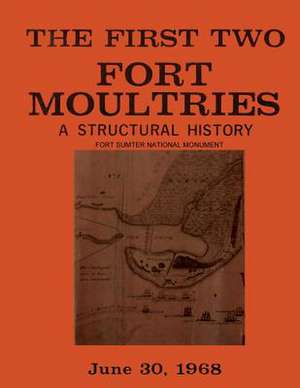The First Two Fort Moultries
Autor Edwin C. Bearss Contribuţii de National Park Service, U. S. Department of the Interioren Limba Engleză Paperback
Preț: 101.46 lei
Nou
Puncte Express: 152
Preț estimativ în valută:
19.41€ • 20.32$ • 16.16£
19.41€ • 20.32$ • 16.16£
Carte disponibilă
Livrare economică 10-24 martie
Preluare comenzi: 021 569.72.76
Specificații
ISBN-13: 9781481955720
ISBN-10: 1481955721
Pagini: 112
Dimensiuni: 216 x 279 x 6 mm
Greutate: 0.28 kg
Editura: CreateSpace Independent Publishing Platform
ISBN-10: 1481955721
Pagini: 112
Dimensiuni: 216 x 279 x 6 mm
Greutate: 0.28 kg
Editura: CreateSpace Independent Publishing Platform
